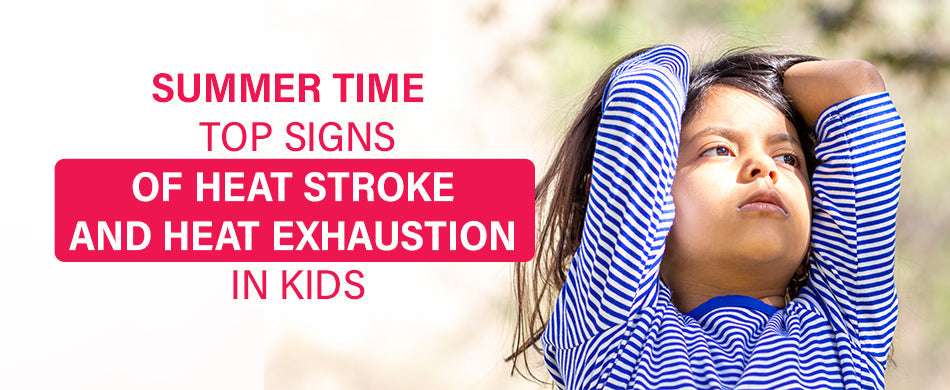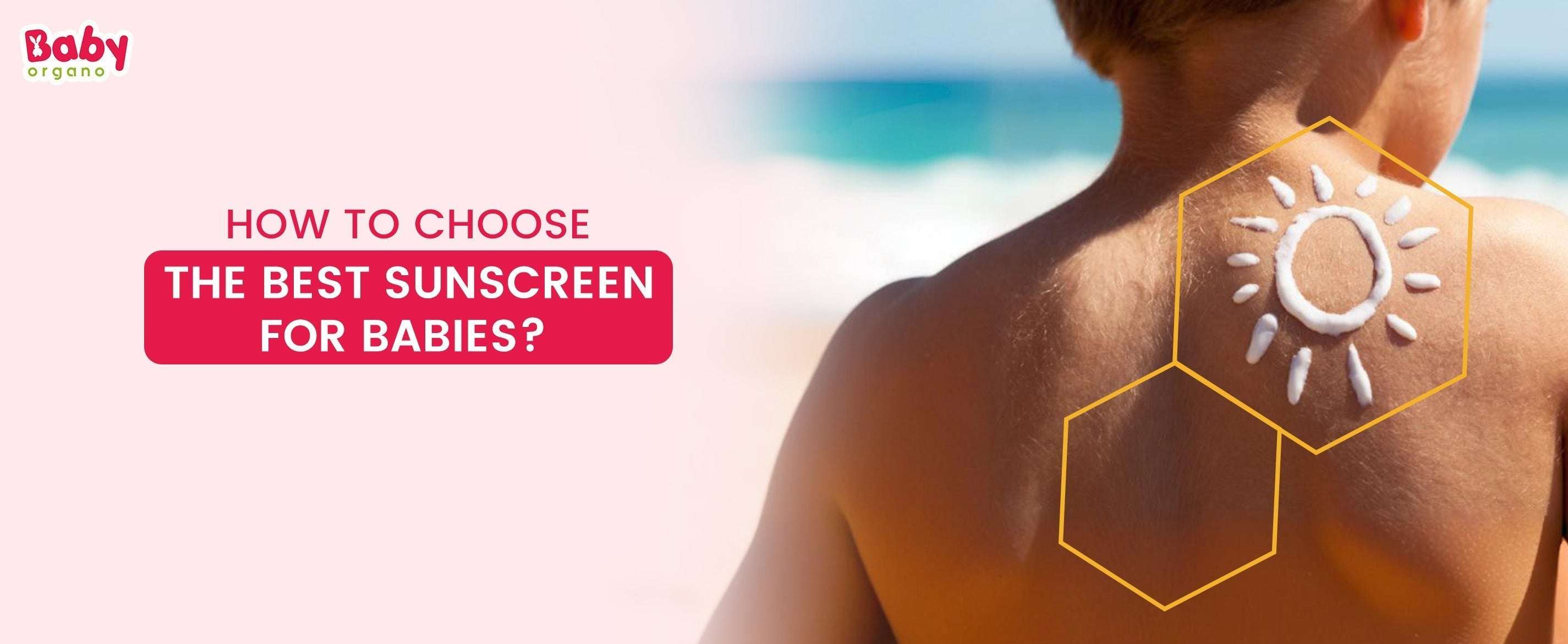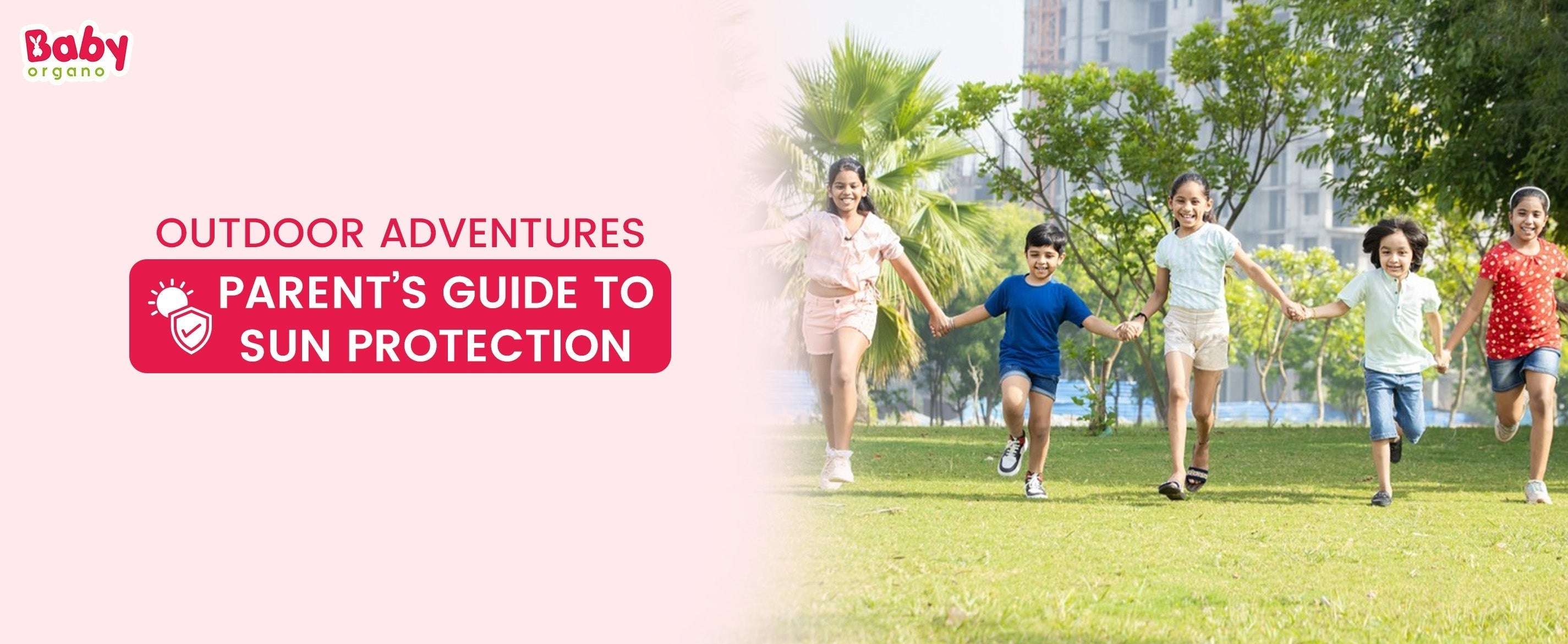Summer Time: Top Signs of Heat Stroke and Heat Exhaustion in Kids
- by Babyorgano Developer

Kids love spending time out in the sun during summer. Whether it is playing peek-a-boo in the garden or splashing water in the swimming pool, they love it. However, recent lifestyle changes have led to a concerning rise in the temperature during summer, eventually leading to surging heat-related illnesses in kids.
This article will discuss the two most common heat-related problems- Heat Exhaustion and Heat Stroke. You will learn about their main symptoms, causes, remedies, and preventive measures that can keep your kids safe. Let’s start:
What is heat exhaustion?
Heat exhaustion is a summer illness when the body overheats and fails to cool. The main cause is losing large quantities of water and salt as sweat, leading to dehydration. This usually happens when your kid spends hours playing or exercising in a hot and humid environment.
If ignored, heat exhaustion could quickly escalate to heat stroke, which requires immediate medical aid. Thus, parents need to check for their children's early signs of heat exhaustion. In the next section, we will learn about the main symptoms of heat exhaustion.
Symptoms of Heat Exhaustion
Babies and kids have a higher chance of becoming victims of heat exhaustion and heat stroke. This is because they sweat less, making natural body cooling impossible. As expected, they might be unable to verbally inform you about these inconveniences, except by being fussy or cranky.
Observing the primary symptoms of heat exhaustion can help prevent the situation from worsening. The signs of heat exhaustion might show up quickly or take some time to become evident. Generally, the milder ones come first, including heat cramps in arms or legs or red heat rashes.
Once your kid gets heat exhaustion, the common symptoms are:
- Mild fever over 100 F. However, in some cases, there won’t be any temperature change.
- Cool skin with goosebumps
- Increased thirst
- Dizziness
- Headache
- Fatigue
- Blurry vision
- Excessive sweating
- Nausea or vomiting
- Pale skin
Now that you know about the symptoms of heat exhaustion, it’s time to learn about some effective solutions. The following section offers preventive measures for the problem.
Also Read: 10 Best Herbs to Cool Your Kid this Summer
Effective remedies for heat exhaustion
Heat exhaustion is a less severe condition compared to heat stroke. You can adopt the following measures to tackle the illness in kids:
- Move them out of the hot environment to a well-air-conditioned room. If not, make them sit in a shady place away from direct sunlight.
- Encourage them to sip cold water or electrolyte solution. You must ask your doctor for the right dosage.
- Run a bath or use a wet cloth to cool your kid’s body.
- Remove excess clothing from your kid’s body. You can change them into lightweight fabrics like cotton.
After learning about heat exhaustion, let’s move to the next section, which discusses heat stroke.
What is heat stroke?
Heat stroke is a critical medical emergency that can put your kid’s life at risk if not treated quickly. In this, a kid’s body temperature goes beyond 104°F in minutes, and their natural cooling system fails to bring down the heat. Some common reasons for heat stroke in kids are long heat exposure, intense physical activities in high temperatures, high humidity, warm dressing, and fluid deficiency.
Symptoms of Heat Stroke
The most evident signs of a heat stroke in children are:
- High body temperature above 104°F
- Red, hot skin
- No sweating
- Fast heartbeat
- Uneven breathing
- Confusion, slurred speech, and disorientation
- Loss of consciousness
- Dizziness and weakness
- Vomiting
- Severe headache
If you recognize these symptoms in your child, contact emergency services quickly without any delay.
What to do in a heat stroke?
As mentioned above, heat stroke is a serious medical condition and requires immediate expert help. However, you can undertake some effective first-aid measures to cool the child down while help arrives:
- Ensure the kid is moved to a cool environment quickly
- Wrap them in loose and damp clothes
- Fan them
- Avoid giving them fluids
That’s all the essential information about heat exhaustion and heat stroke that can help you ensure your kid’s safety. Besides, there are some effective precautionary measures that you can undertake to reduce the risk of these heat-related problems in kids.
You will also like to know: 10 Best Summer Foods for Kids in 2024
How to prevent heat-related illness in kids?
As temperature soars, it is important to take preventive measures against heat illnesses in kids. Here are some easy yet effective practices to guard your kids:
- Fluid Intake: Encourage your kids to drink plenty of healthy and natural drinks, especially water. They can carry a bottle of water, ORS solution, or fresh fruit juice to school or playground. Plus, you should use more Ayurvedic products for kids to keep them healthy and safe naturally.
- Comfortable dressing: Summer is the time to dress your babies in soft, lightweight, loose-fitting clothes. Choose light colors in breathable fabrics like cotton. This will help them regulate their body temperature.
- Breaks: Teach your kid to take breaks while playing. You must ask them to sit in shaded areas to skip excessive heat.
- Stay indoors: During summer, kids should stay indoors in air-conditioned and ventilated spaces. You must avoid sending them outdoors in the afternoon when the temperature is quite high.
- UV safety: If your kid is going out in the sun or swimming, you must use good sunscreen. They can also wear hats and sunglasses to protect their soft skin from harmful UV rays.
- Car safety: Never leave your kid alone inside a parked car. The temperature inside a car can increase quickly, causing severe troubles.
- Educate your kids: Educate your kids on the main symptoms of heat-related illness. Tell them to contact an adult when they feel any signs. Moreover, if your child has any medical condition, seek their doctor's advice before taking preventive measures.
Wrapping up
Your kid’s summertime should be full of innocent mischief, hearty giggles, pool parties, and fun outdoor games. Unfortunately, soaring temperatures expose them to heat exhaustion and heat stroke.
However, the symptoms and precautions of these health problems detailed in this article can help you manage the situation well. If you find this article helpful, let us know in the comments section. We would love to hear from you.





